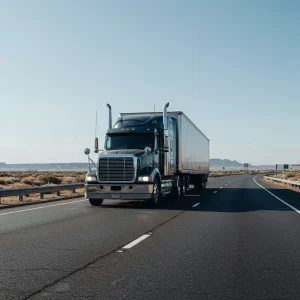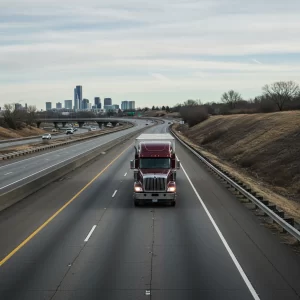
Can my truck be impounded for Clean Truck Check violations?
What Triggers an Impoundment for Clean Truck Violations?
The California Air Resources Board (CARB) Clean Truck Check (CTC) is a rigorous program designed to ensure that heavy-duty trucks, diesel and alternative fuel trucks, hybrid trucks and buses, and commercial vehicles meet strict emissions standards under the Heavy-Duty Inspection and Maintenance (HD I/M) Program. Common reasons for failing the Clean Truck Check include unresolved active fault codes, incomplete OBD drive cycles, malfunctioning Diesel Particulate Filters (DPF), exhaust aftertreatment issues, or worn components such as Turbochargers, Diesel Oxidation Catalysts (DOC), and Selective Catalyst Reduction systems (SCR-U/SCR-N). Trucks that have pending or inactive fault codes or fail to meet first-readiness criteria are particularly vulnerable to non-compliance, which can result in fines, operational restrictions, or potential shutdown for out-of-state trucks.

Heavy-duty trucks often fail the Clean Truck Check due to a combination of mechanical, electronic, and administrative issues. Engine or powertrain control module (ECM/PCM) errors, faulty Heated/Oxygen Sensors (HO2S/O2S), or problems with Diesel Particulate Filters and Periodic Trap Oxidizers can prevent a vehicle from passing inspection. Charge Air Coolers (CAC), Turbochargers/Superchargers (TC/SC), and Throttle Body Fuel Injection (TBI) systems can also lead to high emissions when improperly maintained. Additional causes include incomplete emissions-related drive cycles, improper use of non-continuously-connected OBD scan tools instead of CARB-approved inspection applications, and missed semi-annual emissions testing and reporting. Administrative oversights such as expired registration, unpaid fees, or lack of a certificate of compliance also contribute to failures. Learn more about Clean Truck Check In Lake Mathews, CA .
MIL lamps, or Check Engine Lights, are a critical component of the Clean Truck Check. Active, inactive, or pending fault codes detected by OBD systems can trigger a failed inspection if not addressed properly. Vehicles operating with unresolved emissions-related faults, such as malfunctioning SCR-U, DPF, or Ammonia Oxidation Catalyst (AMOX) systems, are flagged during CARB testing. Drivers and fleet managers must monitor dash lamps closely, ensure comprehensive diagnostic scans are completed, and follow proper first-readiness criteria for OBD monitors to avoid failing the inspection. Learn more about Clean Truck Check In Lake Riverside, CA .
To pass the Clean Truck Check, vehicles must meet all first-readiness criteria for OBD monitors. This involves completing all required drive cycles and warm-up cycles (WUC) to allow the ECM/PCM to accurately detect faults. Failure to meet these criteria, such as skipping drive cycles after fault code clearing, can result in a failed inspection. CARB-approved inspection applications, Portable Emission Acquisition Systems (PEAQS), and Roadside Emissions Monitoring Devices (REMD) are used to verify readiness. Ensuring proper completion of these diagnostic steps is crucial for government, emergency, military, historical, and experimental vehicles alike. Learn more about Clean Truck Check In Lakeview, CA .
Emission system malfunctions are a major contributor to failing the Clean Truck Check. Issues with Exhaust Gas Recirculation (EGR), Cooled EGR (EGR-C), Diesel Oxidation Catalysts (DOC), Diesel Particulate Filters (DPF), Selective Catalyst Reduction-Urea (SCR-U), and Three-Way/Oxidizing Catalysts (TWC/OC) can prevent vehicles from meeting CARB standards. Turbocharger, Turbo/Supercharger (TC/SC), or Throttle Body Fuel Injection (TBI) failures can also increase emissions. Continuous monitoring via OBD, PEAQS, or telematics solutions helps fleet managers detect these problems before compliance testing. Learn more about Clean Truck Check In Lakeview Hot Springs, CA .
Preventative maintenance is critical to ensure compliance with the Clean Truck Check Act. Fleet managers should routinely inspect DPFs, EGR-C systems, SCR units, Turbochargers, and DOCs while monitoring active and inactive fault codes through OBD and CARB-approved inspection applications. Completing drive cycles, maintaining accurate vehicle registration, and training drivers to recognize MIL lamp alerts and follow inspection protocols are essential. Semi-annual emissions testing and administrative compliance, including certificate of compliance acquisition, reduce the risk of fines and operational restrictions. Learn more about Clean Truck Check In La Sierra, CA .
Remote diagnostics play a vital role in preempting Clean Truck Check failures. Continuously-connected telematics devices and non-continuously-connected OBD scan tools can be used to collect emissions-related data, monitor inactive fault codes, and perform preliminary diagnostics. Identifying issues early, such as DPF regeneration failures, SCR-U malfunctions, or PAC/CAC problems, allows technicians to implement corrective actions before CARB inspections. Automated report creation for CARB compliance streamlines administrative requirements and ensures timely data submission. Learn more about Clean Truck Check In Lemona, CA .
In practice, trucks fail the Clean Truck Check for a variety of reasons, from improperly cleared fault codes to neglected EGR or Turbocharger maintenance. Privately-owned vehicles, motorhomes, emergency vehicles, and commercial heavy-duty trucks have all been documented failing due to unresolved MIL lamp alerts, incomplete warm-up cycles, or outdated software in ECM/PCM systems. These examples highlight the importance of ongoing monitoring, driver training, and adherence to CARB’s first-readiness and emissions testing requirements to maintain compliance under the HD I/M Program. Learn more about Clean Truck Check In Linda Rose, CA .
To ensure a successful Clean Truck Check, fleet managers should start by verifying that all applicable drive cycles and warm-up cycles are completed. Active faults must be addressed, MIL lamps checked, and OBD monitors verified for first-readiness criteria. Vehicles should be scanned using CARB-approved inspection applications or PEAQS devices, and any emissions-related issues resolved prior to inspection. Remote diagnostics and telematics solutions provide continuous monitoring of SCR, DPF, DOC, and EGR-C systems. Administrative compliance, including registration, fee payment, and certificate acquisition, should be confirmed. Training drivers on dash lamp alerts, first-readiness criteria, and inspection protocols ensures that both commercial and privately-owned vehicles, from hybrid trucks to government and military tactical vehicles, pass the Clean Truck Check without issue. Learn more about Clean Truck Check In Long Beach, CA .

What Triggers an Impoundment for Clean Truck Violations?

Why Registration for Clean Truck Check is Mandatory

Clean Truck Check Penalties: What Happens If You Don’t Comply?

Understanding the Impact of Air Quality Rules on Older Diesel Trucks

Which Truck Types Are Subject to Clean Truck Check?

Why Pre-Emission Trucks Matter for California Regulations